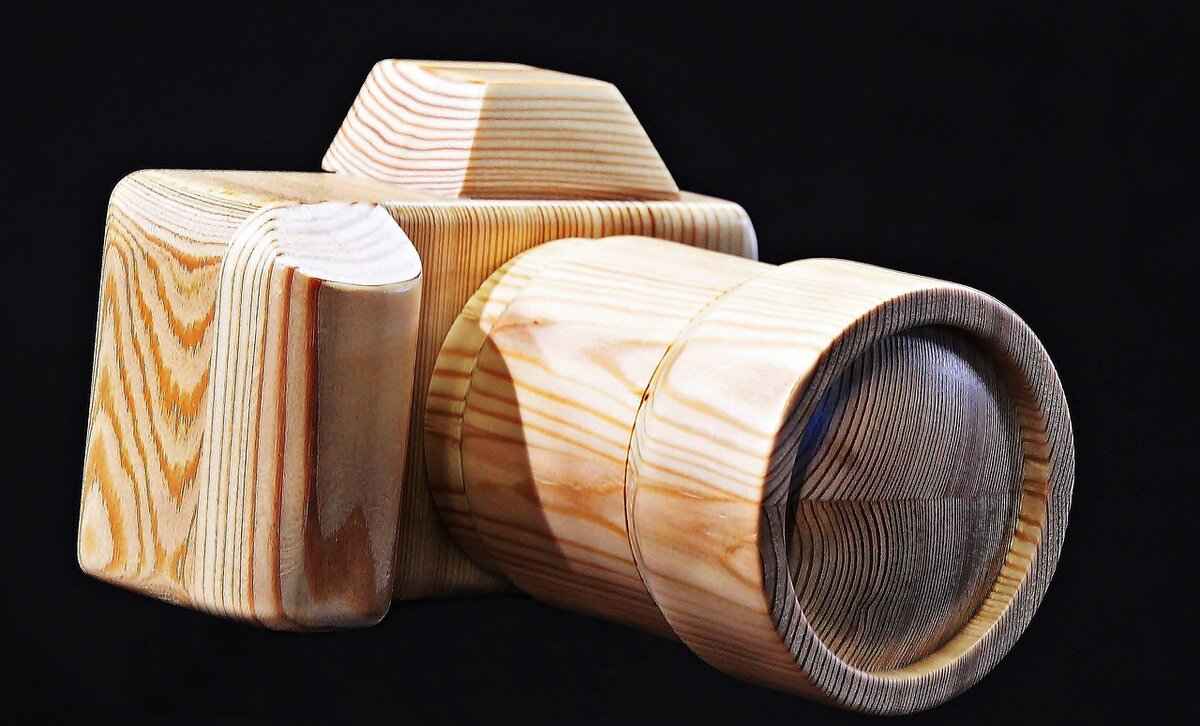When it comes to capturing breathtaking moments with action cameras, understanding the best frame rates and resolutions is essential. This article delves into the optimal settings that can significantly enhance your video quality, ensuring you make informed decisions for various shooting scenarios.
Frame rates refer to the number of frames captured per second (fps), while resolutions indicate the number of pixels that make up the video image. Together, these factors play a critical role in the overall quality of your footage.
The choice of frame rate can dramatically impact the visual appeal of your action footage. Higher frame rates, such as 60fps or 120fps, are ideal for capturing fast-moving subjects, providing a smooth and fluid viewing experience.
- 24fps: Often used in films for a cinematic look.
- 30fps: A standard for television and online videos.
- 60fps: Great for action scenes, delivering smooth motion.
- 120fps: Perfect for slow-motion effects, capturing intricate details.
Choosing between 24fps and 30fps can set the tone for your footage. While 24fps gives a more traditional, film-like quality, 30fps offers a smoother experience, especially for casual viewers.
For those looking to create stunning slow-motion sequences, utilizing frame rates of 120fps or even 240fps is essential. These settings allow you to slow down action dramatically without losing clarity, making your footage visually captivating.
Resolution is a key determinant of video clarity. Higher resolutions, like 4K, provide greater detail, making them ideal for professional use, whereas lower resolutions like 1080p are often sufficient for casual sharing.
Deciding on the appropriate resolution largely depends on your intended use. For instance, 1080p is generally adequate for social media content, while 4K is preferred for high-quality projects or larger displays.
4K resolution shines in scenarios where detail is paramount, such as capturing intricate movements in sports or nature. It also allows for cropping during editing without compromising quality, making it a favorite among professionals.
1080p remains a popular choice due to its balance of quality and manageable file size. This resolution is ideal for most casual users, providing excellent results for sharing on platforms like YouTube and Instagram.
Combining the right frame rates and resolutions can elevate your video quality. For example, shooting in 4K at 30fps is excellent for scenic shots, while 1080p at 60fps excels in dynamic action sequences.
To optimize your action camera’s performance, adjust the settings according to your filming environment. Manual adjustments to frame rate and resolution can help you achieve the desired results.
Lighting is a crucial factor in determining the optimal frame rate. In low-light environments, using lower frame rates can help reduce motion blur, while brighter settings allow for higher frame rates without sacrificing quality.
Many action cameras come equipped with stabilization features that enhance footage quality, especially at higher frame rates. Understanding how these technologies work can greatly improve the overall viewing experience.
In summary, selecting the right frame rates and resolutions is vital for capturing stunning action footage. By understanding your specific needs and the capabilities of your camera, you can achieve the best possible results in your videography.
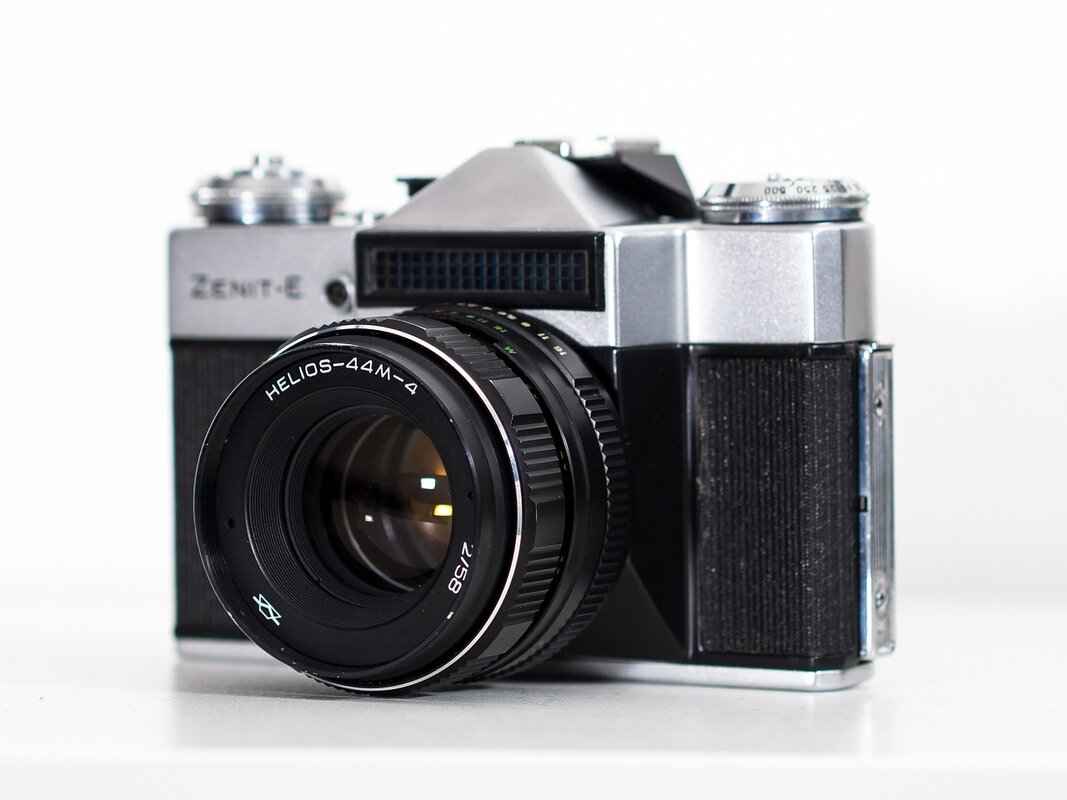
What Are Frame Rates and Resolutions?
Understanding frame rates and resolutions is crucial for action camera users. These two elements play a significant role in determining the overall quality of your video footage. Frame rates are measured in frames per second (fps) and dictate how smooth your video playback will appear. Meanwhile, resolutions refer to the number of pixels that make up the video image, affecting its clarity and detail.
When filming high-energy activities, such as sports or adventure pursuits, the choice of frame rate can significantly impact the visual experience. For instance, a higher frame rate, such as 60fps or 120fps, captures more frames in a given period, resulting in smoother motion. This is particularly beneficial when recording fast-paced actions, as it minimizes motion blur and enhances the viewer’s ability to follow the action. Conversely, lower frame rates like 24fps or 30fps can provide a more cinematic feel, which is preferred for narrative filmmaking.
Resolution is another critical factor that cannot be overlooked. It determines how much detail is visible in your footage. For example, filming in 4K resolution offers four times the detail of 1080p, making it ideal for projects that require high clarity, such as nature documentaries or professional videography. The increased resolution allows for cropping and post-production adjustments without significant quality loss, which is essential for detailed editing and showcasing intricate visuals.
- 1080p: This resolution is a popular choice for casual users, offering a good balance between quality and file size. It’s suitable for online sharing and social media content.
- 4K: Ideal for professional projects, 4K resolution captures intricate details and is perfect for large screen displays.
Choosing the right combination of frame rate and resolution depends on your specific filming needs. For example, if you’re capturing a scenic landscape, a setting of 4K at 30fps might be ideal. However, if you’re filming a thrilling action sequence, you might opt for 1080p at 60fps to ensure smooth motion and clarity.
In conclusion, understanding the interplay between frame rates and resolutions can significantly enhance your action camera footage. By selecting the appropriate settings based on your filming environment and desired outcomes, you can capture stunning visuals that resonate with your audience.
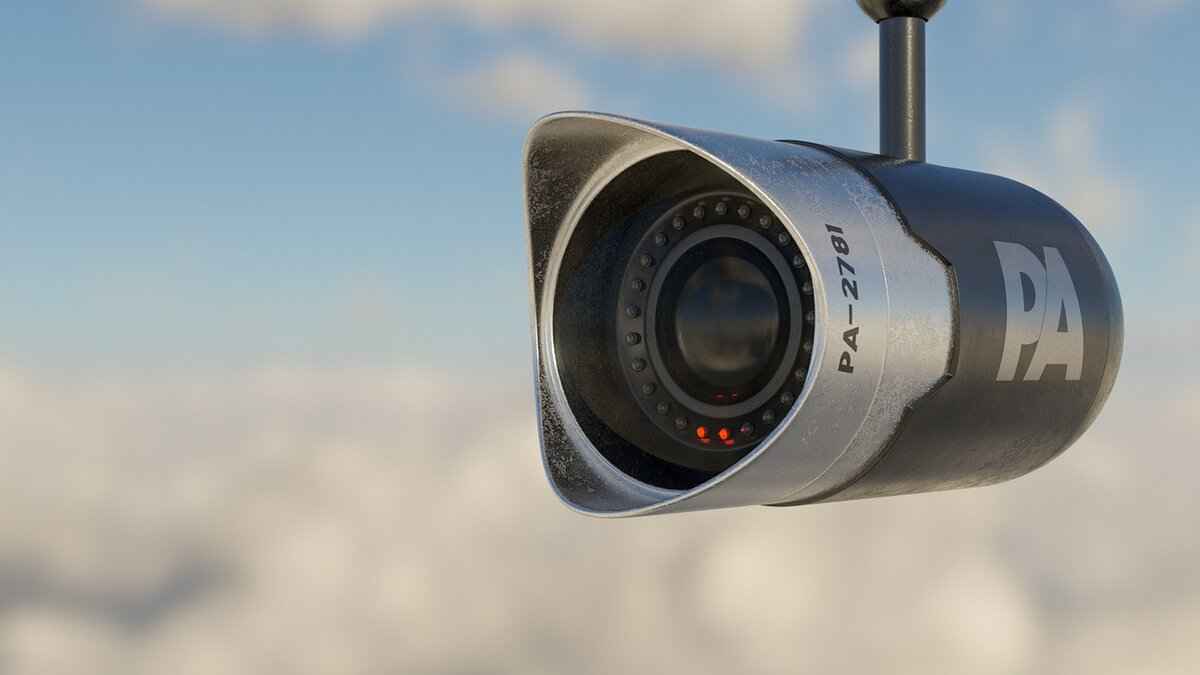
Why Does Frame Rate Matter in Action Cameras?
When it comes to capturing stunning visuals with action cameras, understanding frame rates is essential. The frame rate, measured in frames per second (fps), determines how many images your camera captures in one second. This measurement is crucial because it directly influences the smoothness and clarity of the video footage you produce.
The relationship between frame rate and motion quality cannot be overstated. A higher frame rate, such as 60fps or more, results in smoother motion, which is particularly beneficial for fast-paced activities. For instance, when filming sports or extreme sports, capturing every detail of rapid movement is vital. A frame rate of 120fps or even 240fps allows for incredible slow-motion playback, enabling viewers to appreciate the intricacies of the action.
- 24fps: Often used for cinematic productions, this frame rate provides a more film-like quality, making it suitable for narrative storytelling.
- 30fps: Commonly used for online video content, this frame rate offers a good balance between smooth motion and file size.
- 60fps: Ideal for action-packed scenes, this frame rate is perfect for capturing sports and fast movements with clarity.
- 120fps and above: These high frame rates are excellent for slow-motion footage, allowing you to create dramatic effects that enhance the visual storytelling.
The viewer’s experience is greatly influenced by the frame rate. Higher frame rates can reduce motion blur, making it easier for audiences to follow fast actions. For instance, when watching a thrilling chase scene or a skateboard trick, a smoother frame rate can keep viewers engaged and immersed in the action. Conversely, lower frame rates may introduce choppiness, which can detract from the overall viewing experience.
When it comes to editing, the frame rate you choose can significantly impact your workflow. Higher frame rates provide more frames to work with, allowing for smoother transitions and effects. If you plan to slow down your footage during editing, starting with a higher frame rate is essential to maintain quality. For example, footage shot at 120fps can be slowed down to 30fps while still appearing fluid and detailed.
Choosing the right frame rate depends on several factors, including the type of action you’re filming and the intended use of the footage. Consider the following:
- Type of Action: Fast-paced sports require higher frame rates for clarity, while slower scenes may benefit from lower frame rates.
- Distribution Platform: Online platforms often compress video, so a frame rate of 30fps is generally sufficient for social media sharing.
- Editing Needs: If you plan to create slow-motion effects, opt for higher frame rates during filming.
In summary, understanding the importance of frame rates in action cameras is crucial for anyone looking to capture high-quality footage. Whether you are filming a thrilling mountain bike ride or a serene sunset, selecting the appropriate frame rate can enhance the visual storytelling and viewer experience. By carefully considering your shooting conditions and the desired outcome, you can make informed decisions that lead to stunning results.
Common Frame Rates Explained
When it comes to capturing high-quality footage with action cameras, understanding frame rates is crucial. Frame rates, measured in frames per second (fps), determine how smooth and fluid your video appears. Different frame rates are suited for different scenarios, and knowing which to use can significantly enhance your filming experience. Below, we explore the most common frame rates available for action cameras and their specific benefits.
Action cameras typically offer several frame rate options, each catering to various filming needs. The most common frame rates include:
- 24fps
- 30fps
- 60fps
- 120fps
Each frame rate serves a unique purpose in action filming:
- 24fps: Often referred to as the cinematic standard, 24fps is widely used in film production. It provides a film-like quality that can enhance storytelling in your videos. This frame rate is ideal for narrative-driven content, where the aesthetic is more important than the smoothness of motion.
- 30fps: This frame rate strikes a balance between cinematic quality and smooth motion. It is commonly used for online videos and vlogs, providing a clear and fluid viewing experience without sacrificing too much detail. This makes it a popular choice for casual filming.
- 60fps: If you’re filming fast-paced action, such as sports or extreme activities, 60fps is a great choice. It captures motion with greater clarity, reducing motion blur and ensuring that fast movements are depicted smoothly. This frame rate is perfect for showcasing dynamic scenes, allowing viewers to appreciate the action in detail.
- 120fps: For those looking to create stunning slow-motion effects, 120fps is essential. This high frame rate allows you to capture rapid movements and then play them back at a slower speed, creating dramatic and visually appealing footage. It’s particularly useful for action sequences where you want to highlight specific moments.
Choosing the right frame rate depends on the context of your shoot:
- If you’re aiming for a more dramatic, cinematic feel, opt for 24fps.
- For general vlogging or casual content, 30fps is often sufficient.
- For sports and action shots, 60fps provides clarity and smoothness.
- To create captivating slow-motion sequences, use 120fps or higher.
Understanding the differences between these common frame rates allows you to make informed decisions when filming with your action camera. By selecting the appropriate frame rate for your specific needs, you can enhance the quality of your footage and effectively capture the essence of your adventures. Whether you’re aiming for a cinematic experience or high-speed action, there’s a frame rate that fits your vision perfectly.
24fps vs. 30fps: Which Should You Choose?
When it comes to capturing video with action cameras, the choice of frame rate can dramatically influence the final product. Among the most debated options are 24fps and 30fps. Understanding the differences between these two frame rates is essential for achieving the desired cinematic quality in your footage.
Using 24fps is often favored by filmmakers for its cinematic look. This frame rate mimics the traditional film standard and provides a more artistic and dramatic feel to the footage. It creates a slight motion blur that enhances the perception of movement, which can be particularly effective in narrative storytelling. If your aim is to create a film-like experience, especially for short films or narrative-driven content, then 24fps is the way to go.
On the other hand, 30fps is commonly used for video content that requires a smoother viewing experience. This frame rate is often preferred for casual videos, vlogs, and online content where clarity and fluidity are essential. The increased frame rate reduces motion blur, making it ideal for fast-paced action sequences, such as sports or adventure footage, where every detail counts. If your target audience is looking for a more realistic and engaging experience, 30fps might be the better choice.
| Feature | 24fps | 30fps |
|---|---|---|
| Cinematic Quality | High | Moderate |
| Motion Blur | More | Less |
| Ideal Use | Films, Short Stories | Vlogs, Sports, Action |
Ultimately, the decision between 24fps and 30fps should be guided by your specific project requirements and audience expectations. Consider the following:
- If you are creating a narrative film or artistic project, lean towards 24fps.
- For engaging vlogs or action-packed sports videos, 30fps would be more suitable.
- Evaluate your editing and post-production capabilities, as higher frame rates may require more processing power.
In summary, both 24fps and 30fps have their unique advantages and applications. By understanding the implications of each frame rate, you can make an informed decision that aligns with your creative vision and the needs of your audience. Whether you choose the cinematic allure of 24fps or the smoothness of 30fps, the key is to capture your story effectively and engagingly.
High Frame Rates for Slow Motion
When it comes to capturing slow-motion footage, utilizing high frame rates is not just beneficial but essential. Frame rates such as 120fps or 240fps allow videographers to achieve stunning playback effects that can transform ordinary scenes into dramatic visual spectacles. But why exactly do these high frame rates matter, and how can they enhance your footage?
The primary function of high frame rates is to provide a smoother playback experience. When filming fast movements—like a skateboarder performing tricks or a car speeding down a track—standard frame rates may struggle to capture the fluidity of motion. By filming at 120fps or even 240fps, you can slow down the action in post-production, revealing intricate details that are often missed at lower frame rates.
Slow-motion footage adds a layer of drama and emphasis to your videos. For instance, capturing the moment a basketball swishes through the net or a flower blooming can evoke powerful emotions in viewers. This technique not only heightens the aesthetic appeal but also allows for a deeper connection with the audience.
To effectively utilize high frame rates, it’s crucial to have the right equipment. Most modern action cameras support frame rates of 120fps and 240fps, but ensure that your camera can also handle the corresponding resolutions. Filming at high frame rates often requires higher processing power and storage capacity, so check your camera’s specifications before shooting.
Lighting plays a vital role in achieving quality slow-motion footage. High frame rates require more light to maintain clarity and reduce noise. In bright conditions, you can achieve stunning results, but in low-light scenarios, you may need to adjust your settings or use additional lighting sources to ensure your footage remains crisp and clear.
Once you’ve captured your footage at high frame rates, the next step is post-production. Editing software allows you to manipulate the speed of your clips effectively. By slowing down your footage, you can create breathtaking sequences that highlight the beauty of motion. Additionally, consider adding effects or music to enhance the overall impact of your slow-motion scenes.
- Sports Filming: Capture the thrill of the game with detailed slow-motion highlights.
- Nature Documentaries: Showcase the elegance of wildlife in action.
- Adventure Sports: Document extreme sports with dramatic effects that engage viewers.
In conclusion, utilizing high frame rates such as 120fps or 240fps is crucial for any filmmaker looking to capture slow-motion footage. These settings not only enhance the visual appeal but also allow for a more engaging storytelling experience. By understanding the importance of high frame rates, you can elevate your action footage and leave a lasting impression on your audience.
How Resolution Affects Video Quality
When it comes to video quality, resolution plays a pivotal role that cannot be overlooked. It refers to the amount of detail that the video displays, and it is typically measured in pixels. The higher the resolution, the more pixels are used to create the image, resulting in a clearer and more detailed picture. This is especially important for action cameras, which are often used in dynamic environments where clarity can make a significant difference in the viewing experience.
Action cameras are designed to capture fast-paced activities, and the resolution affects how well these moments are documented. Higher resolutions, such as 4K, provide a level of detail that is essential for professional-grade footage. This level of clarity allows viewers to appreciate the nuances of a scene, from the texture of a surface to the intricate movements of the subjects in action.
- 4K Resolution: This resolution boasts over 8 million pixels, offering four times the detail of 1080p. It is ideal for capturing intricate details and is especially useful for large displays.
- 1080p Resolution: Often referred to as Full HD, 1080p is sufficient for most online content and is widely accepted for casual viewing.
- 720p Resolution: While considered the minimum for HD, 720p may suffice for quick sharing on social media or casual viewing but lacks the detail needed for more serious projects.
When selecting a resolution for your action camera, consider your intended use:
- For professional projects or large screen displays: Use 4K.- For social media sharing or casual videos: 1080p is often sufficient.- For quick captures or low-bandwidth scenarios: 720p may be acceptable.
Higher resolutions offer several advantages:
- Detail Preservation: With more pixels, higher resolutions can capture fine details that lower resolutions might miss.
- Post-Production Flexibility: Filming in 4K allows for cropping and zooming in during editing without losing quality.
- Enhanced Viewing Experience: Higher resolutions provide a more immersive experience, especially on larger screens.
While higher resolutions have their benefits, there are scenarios where lower resolutions may be more practical:
- Storage Considerations: Lower resolutions take up less space, which is crucial for long shoots.
- Faster Uploads: If you need to share content quickly online, lower resolutions can facilitate faster upload times.
- Casual Viewing: For everyday sharing on social media, 1080p or even 720p may be more than adequate.
Ultimately, the choice of resolution should align with your specific needs and the capabilities of your action camera. By understanding how resolution impacts video quality, you can make informed decisions that enhance your footage and meet your audience’s expectations.
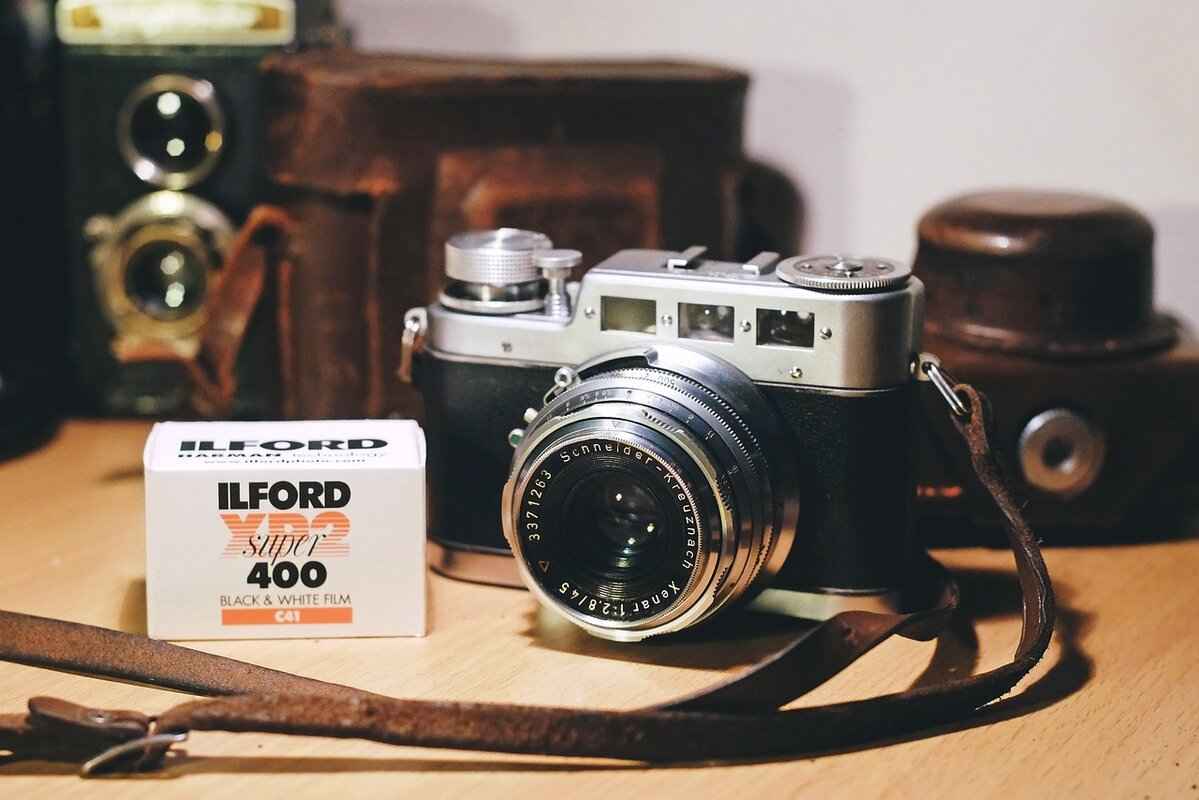
Choosing the Right Resolution for Your Needs
When it comes to action cameras, resolution is a critical factor that can significantly impact the quality of your footage. Understanding how to choose the right resolution for your specific needs can enhance your video content, whether for personal use or professional projects. This section will delve into the various resolutions available and help you determine which one is best suited for your intended purpose.
Selecting the appropriate resolution is essential and largely depends on your intended use. For instance, 1080p resolution is often sufficient for casual online content, such as vlogs or social media posts. This resolution provides a good balance between quality and file size, making it ideal for quick sharing without sacrificing too much detail.
However, if your goal is to create high-quality content for professional projects or large screen displays, 4K resolution is the preferred choice. This higher resolution allows for a greater level of detail and clarity, which is particularly beneficial in scenarios where intricate visuals are crucial. With 4K, you can crop and edit your footage without losing significant quality, making it perfect for videographers who require flexibility in post-production.
- Enhanced Detail: 4K resolution provides four times the pixel count of 1080p, resulting in sharper images and more detailed footage.
- Future-Proofing: As technology advances, more platforms are supporting 4K content, ensuring your videos remain relevant.
- Creative Flexibility: The ability to crop and zoom into footage without losing quality allows for more creative editing options.
While 4K is impressive, it’s important to recognize that 1080p can be entirely adequate for many users. Here are some scenarios where 1080p may be the best option:
- Social Media Content: Most social media platforms compress videos, making 1080p a sufficient choice for sharing.
- Personal Use: For casual shooting, such as family events or vacations, 1080p offers great quality without overwhelming file sizes.
- Streaming: Many streaming services still prioritize 1080p, making it a practical choice for online viewing.
When deciding between 1080p and 4K, consider the following factors:
- Device Compatibility: Ensure your playback devices support the desired resolution. Some older devices may not handle 4K content well.
- Storage Space: 4K files are significantly larger, so assess your storage capabilities before opting for higher resolution.
- Editing Needs: If you plan to do extensive editing, 4K provides more flexibility, but for straightforward projects, 1080p may suffice.
In conclusion, the choice between 1080p and 4K resolution truly hinges on your specific needs and the context in which you’ll use the footage. By understanding the advantages and limitations of each resolution, you can make an informed decision that enhances the quality of your action camera footage.
When to Use 4K Resolution
When it comes to action cameras, 4K resolution has become a game-changer for videographers and enthusiasts alike. This advanced resolution offers unparalleled clarity and detail, making it an ideal choice for a variety of shooting scenarios. But when exactly should you opt for 4K? Let’s delve deeper into its benefits and applications.
4K resolution, which boasts a pixel count of 3840 x 2160, provides four times the detail of 1080p. This level of detail is particularly beneficial in fast-paced environments where every frame counts. Whether you are capturing high-speed sports, wildlife in motion, or exhilarating adventure activities, 4K allows you to see the intricate details that would otherwise be lost in lower resolutions.
One of the primary reasons to choose 4K resolution is its ability to maintain image quality even in dynamic settings. When filming fast-moving subjects, the high resolution ensures that the footage remains sharp and clear, allowing viewers to appreciate the nuances of the action. This clarity is invaluable for professional videography, where every detail matters.
Another significant advantage of using 4K resolution is the flexibility it provides during the editing process. When you shoot in 4K, you have the ability to crop and reframe your shots without compromising quality. This means you can focus on specific elements of your footage, creating a more polished final product. For instance, if you capture a wide scene but later decide to zoom in on a specific athlete or object, 4K allows for this adjustment without losing clarity.
For professionals in the field of videography, 4K resolution is often a requirement rather than a choice. Many clients expect high-quality footage that stands out, especially for promotional materials, documentaries, or cinematic projects. The ability to deliver high-definition content not only enhances the visual appeal but also elevates the overall production value.
While 4K is undoubtedly beneficial for professionals, casual users may wonder if it is necessary for their needs. If you frequently share videos on platforms like YouTube or social media, the higher resolution can still be advantageous. 4K content is becoming increasingly popular, and having high-quality footage can help your videos stand out in a crowded market.
Despite the numerous advantages of 4K, there are scenarios where lower resolutions may suffice. For casual family videos or quick social media posts, 1080p can be more than adequate. It provides a good balance between quality and file size, making it easier to manage and share without the need for extensive storage.
In summary, 4K resolution is a powerful tool for capturing high-quality footage in fast-paced environments. Its ability to maintain detail during editing and provide stunning visuals makes it ideal for professional use. However, casual users should assess their specific needs and consider whether the benefits of 4K outweigh the practicalities of file management and storage. Ultimately, understanding when to use 4K can enhance your videography experience and ensure you capture every moment with clarity.
Benefits of 1080p Resolution
When it comes to video quality, 1080p resolution stands out as a popular choice among both casual users and professionals alike. This resolution, also known as Full HD, offers a perfect balance between visual quality and file size, making it an ideal option for a variety of applications.
One of the primary reasons for the widespread adoption of 1080p resolution is its ability to deliver excellent image clarity without overwhelming storage capacities. With a pixel count of 1920 x 1080, videos shot in 1080p provide sharp details that are suitable for most viewing platforms, including televisions, computers, and mobile devices.
In today’s digital world, where social media platforms dominate, 1080p resolution is particularly advantageous. Videos in this format are easily shareable, ensuring that users can upload content without long processing times or excessive bandwidth consumption. This makes it a preferred choice for content creators looking to engage their audiences on platforms like YouTube, Instagram, and Facebook.
Another benefit of 1080p resolution is its compatibility with a wide range of devices. Most modern smartphones, tablets, and laptops support 1080p playback, ensuring that your videos can be viewed seamlessly across different platforms. This versatility is crucial for users who want to reach a broader audience without compromising on quality.
While higher resolutions like 4K offer stunning detail, they also require significantly more storage space and processing power. In contrast, 1080p strikes a balance, allowing users to store more videos without needing extensive hard drive capacity. This makes it an excellent choice for those who frequently record and edit footage.
For those involved in video editing, 1080p resolution provides a solid foundation for post-production work. The quality is high enough to allow for cropping and other adjustments without noticeable loss of detail. This flexibility is especially beneficial for projects that may require re-framing or adjustments after filming.
1080p resolution performs admirably across different lighting conditions. Whether filming in bright daylight or low-light environments, this resolution maintains clarity and detail. This adaptability makes it a reliable choice for action cameras and other recording devices, ensuring that users can capture high-quality footage in various settings.
In summary, 1080p resolution is a versatile option that caters to a wide range of users, from casual videographers to professional content creators. Its balance of quality, file size, and compatibility with various devices makes it an ideal choice for anyone looking to produce high-quality videos. Whether for social media sharing, editing, or general use, 1080p stands as a reliable standard in the world of video production.

What Frame Rate and Resolution Combinations Work Best?
When it comes to capturing breathtaking footage with your action camera, understanding the ideal frame rate and resolution combinations is essential. Different scenarios demand specific settings to ensure that your videos are not only visually stunning but also convey the right emotions and details. In this article, we will explore the optimal frame rate and resolution combinations to help you make informed choices for your next adventure.
Combining the right frame rates and resolutions can significantly enhance your video quality. The choice of settings can affect everything from the smoothness of motion to the clarity of details captured in your footage. Below are some recommended combinations for various shooting scenarios:
- 4K at 30fps: This combination is excellent for scenic shots and landscapes. The higher resolution captures intricate details, while 30fps provides a smooth playback that enhances the viewing experience.
- 1080p at 60fps: Ideal for fast-paced action sequences, this setting is perfect for sports or adventure filming. The higher frame rate ensures that motion appears fluid, making it easier to follow the action.
- 1080p at 30fps: This setting is suitable for vlogging or casual video content. It strikes a balance between quality and file size, making it easy to share online without sacrificing too much detail.
- 4K at 60fps: For those looking to capture ultra-smooth, high-definition footage, this combination is perfect for professional projects. It allows for detailed editing and cropping while maintaining high quality.
Understanding the context of your filming is crucial. For instance, if you’re shooting in a bright environment, you might want to utilize higher frame rates like 60fps or even 120fps to capture fast movements without motion blur. Conversely, in low-light conditions, opting for a lower frame rate can help reduce noise and enhance image quality.
Choosing the appropriate frame rate and resolution can make or break your video quality. Each combination serves a unique purpose and can dramatically affect how your footage is perceived. Here are some considerations:
- Action Sequences: When filming sports or fast-moving subjects, a higher frame rate (like 60fps or higher) is essential to avoid motion blur and ensure clarity.
- Travel and Nature: For scenic views or nature shots, 4K at 30fps allows you to capture stunning details without compromising the overall smoothness of the video.
- Social Media Content: Videos intended for platforms like Instagram or YouTube can benefit from 1080p at 30fps, as it provides a good balance between quality and file size.
To maximize the quality of your footage, consider the following tips:
- Experiment with Settings: Don’t hesitate to try out different combinations in various environments. This experimentation will help you understand what works best for your style.
- Consider Post-Production: Higher resolutions like 4K provide more flexibility in editing. You can crop and reframe your shots without losing quality.
- Use Stabilization Features: Many action cameras come with built-in stabilization. Utilizing this feature can enhance the smoothness of your footage, especially at higher frame rates.
By understanding and applying the right frame rate and resolution combinations, you can elevate your video quality to new heights. Whether you’re capturing thrilling adventures or serene landscapes, making informed choices will ensure your footage stands out.
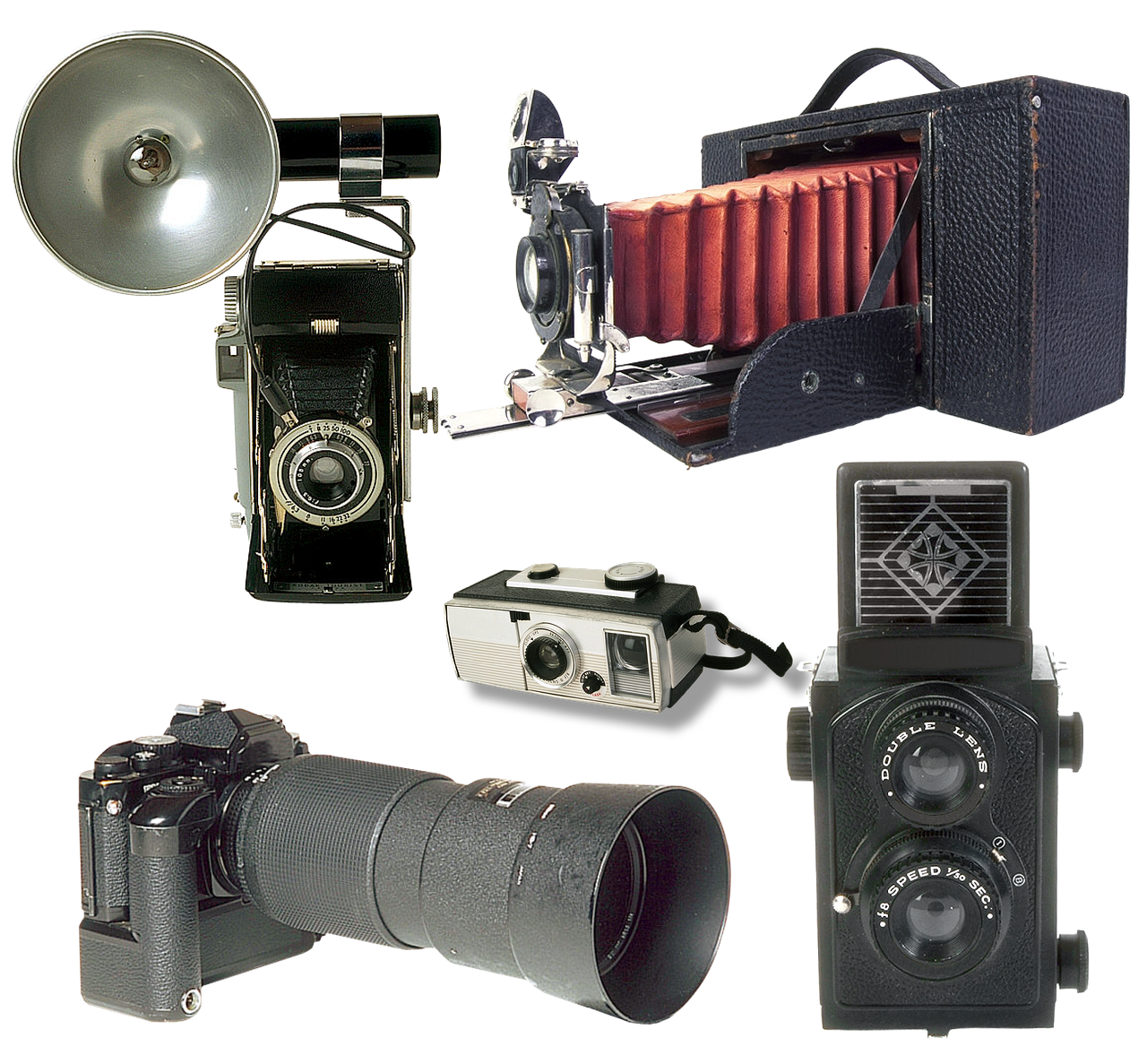
Tips for Action Camera Settings
When it comes to capturing stunning footage with your action camera, adjusting your settings can make a world of difference. The right frame rate and resolution not only enhance the quality of your videos but also tailor them to your specific shooting environment and desired outcomes. Below are essential tips to help you optimize your action camera settings for the best results.
Frame rates refer to the number of frames captured per second (fps), while resolution indicates the level of detail in your footage. For instance, a higher resolution like 4K provides greater clarity, while a frame rate of 60fps ensures smoother motion, particularly during fast-paced activities.
Utilizing manual settings allows you to have complete control over your filming experience. Automatic settings may not always adapt to varying lighting conditions or fast movements effectively. By adjusting the frame rate and resolution manually, you can cater to specific scenarios, ensuring optimal performance.
- 24fps: Ideal for cinematic and narrative-style filming.
- 30fps: Great for general use and casual videos.
- 60fps: Perfect for sports and action shots, offering a smooth viewing experience.
- 120fps and above: Best for capturing slow-motion effects, allowing you to highlight fast actions dramatically.
Resolution plays a crucial role in video quality. Here are some guidelines:
- 4K Resolution: Excellent for professional projects and allows for significant cropping without losing detail.
- 1080p Resolution: A popular choice for social media and casual videos, balancing quality and file size effectively.
Lighting significantly impacts your choice of frame rate. In low-light conditions, opting for a lower frame rate can help reduce motion blur. Conversely, brighter environments allow for higher frame rates, enabling you to capture smoother action.
Many modern action cameras come equipped with stabilization features. These can enhance the quality of your footage, especially when shooting at higher frame rates. Understanding how to leverage these features will help you achieve smoother and more professional-looking videos.
Don’t hesitate to experiment with different settings. Each shooting scenario may require adjustments to achieve the best results. Take the time to test various frame rates and resolutions in different environments to discover what works best for your style.
In conclusion, adjusting your action camera settings is essential for capturing high-quality footage. By utilizing manual settings for frame rate and resolution, you can tailor your filming experience to match any environment. Whether you’re filming a thrilling adventure or a serene landscape, the right settings will make all the difference in your final product.
Lighting Conditions and Frame Rate
Lighting conditions are a fundamental factor in determining the optimal frame rate for action cameras. Understanding how light interacts with frame rates can significantly enhance the quality of your footage, particularly in dynamic environments.
Frame rates are measured in frames per second (fps), and they dictate how many individual frames are captured in one second of video. In low-light conditions, using a lower frame rate can help minimize issues like motion blur. When the light is scarce, each frame needs more time to gather light, and a lower fps allows the camera sensor to absorb more light per frame, resulting in clearer images.
- Reduced Motion Blur: Lower frame rates, such as 24fps or 30fps, can help in achieving sharper images in dim lighting.
- Improved Exposure: Longer exposure times for each frame mean that more light is captured, improving overall image quality.
- Enhanced Detail: Capturing less motion allows for more detail in each frame, which is particularly beneficial for static scenes.
In contrast, bright environments offer the opportunity to utilize higher frame rates such as 60fps or even 120fps. This is especially advantageous for capturing fast-moving subjects or action sequences. The increased frame rate results in smoother motion and less blur, providing a more immersive viewing experience.
- Smoother Motion: Higher fps creates a fluid motion that is particularly appealing in sports and action shots.
- Better Detail in Fast Movements: Capturing more frames per second allows for better clarity when subjects are moving quickly.
- Flexibility in Editing: High frame rates provide more options for slow-motion effects during post-production, enhancing storytelling.
When setting up your action camera, consider the following tips:
1. Assess the lighting conditions before filming.2. Choose a frame rate that matches the environment: - Low-light: 24fps or 30fps - Bright: 60fps or higher3. Experiment with different settings to find the best combination for your specific scenario.
In summary, understanding the relationship between lighting conditions and frame rates is crucial for capturing high-quality action footage. Whether you’re shooting in low light or bright environments, adjusting your frame rate accordingly can make a significant difference in the clarity and overall quality of your videos. By mastering these settings, you can elevate your action camera footage to a professional level.
Stabilization Features and Frame Rate
When it comes to capturing stunning action footage, stabilization features play a pivotal role, especially when paired with various frame rates. Understanding how these technologies work can significantly enhance the quality of your videos, making them more visually appealing and professional.
Stabilization features in action cameras are designed to minimize the effects of camera shake and vibrations. This technology ensures that your footage remains steady, even during intense movements such as running, biking, or extreme sports. There are two primary types of stabilization: optical stabilization and digital stabilization. Each has its advantages and applications.
Optical stabilization uses physical components within the camera to counteract movement. By adjusting the lens or sensor position, it compensates for motion, resulting in smoother footage. On the other hand, digital stabilization relies on software algorithms to reduce shake. This method analyzes the video frame by frame and crops the edges to create a more stable image. Both methods can be effective, but they may introduce trade-offs such as slight cropping or reduced resolution.
Higher frame rates, such as 60fps or 120fps, are often used to capture fast-paced action. However, without proper stabilization, these high frame rates can lead to shaky and unwatchable footage. By integrating stabilization features with elevated frame rates, you can achieve fluid motion while maintaining the clarity and detail that higher frame rates offer. This combination is particularly beneficial in dynamic environments where movements are rapid and unpredictable.
- Enhanced Viewing Experience: Smooth footage is more enjoyable to watch, keeping viewers engaged.
- Improved Professionalism: Stabilized videos look more polished, making them suitable for presentations or social media.
- Flexibility in Editing: Stabilized footage allows for more creative editing options, giving you the freedom to crop and adjust without compromising quality.
When selecting settings for your action camera, consider the environment and the type of action you are capturing. In bright conditions, you may opt for higher frame rates and enable stabilization to ensure smooth playback. Conversely, in low-light situations, you might prioritize lower frame rates to enhance light sensitivity while still utilizing stabilization features to reduce blur.
Many users believe that stabilization can completely eliminate all forms of shake and jitter. While it significantly reduces these effects, it is not a cure-all. It is essential to maintain proper handling techniques and use a stable mounting system to achieve the best results. Additionally, excessive reliance on digital stabilization may lead to a loss of resolution, so it’s crucial to find a balance.
In conclusion, understanding the interplay between stabilization features and frame rates is vital for capturing high-quality action footage. By leveraging these technologies effectively, you can create videos that not only showcase your adventures but also stand out in terms of clarity and professionalism. Always remember to test different settings based on your shooting conditions, and don’t hesitate to experiment to find the perfect combination for your needs.

Conclusion: Making the Right Choice for Your Action Footage
When it comes to capturing stunning action footage, the choice of frame rates and resolutions is crucial. Understanding your specific needs and the capabilities of your action camera can significantly enhance the quality of your videos. This article will delve into the best practices for selecting frame rates and resolutions that suit various filming scenarios.
The frame rate refers to the number of frames captured per second (fps) in your video. A higher frame rate typically results in smoother motion, making it particularly advantageous for fast-paced activities like sports or adventure filming. For instance, capturing footage at 60fps or even 120fps can create a more dynamic viewing experience.
- 24fps: This frame rate is often used for cinematic productions, providing a film-like quality.
- 30fps: Ideal for casual videos, offering a smoother viewing experience without excessive motion blur.
- 60fps: Great for action scenes, this frame rate captures fast movements clearly, making it a popular choice for sports.
- 120fps: Perfect for slow-motion effects, allowing you to showcase rapid movements with stunning detail.
Resolution refers to the amount of detail your video holds, typically measured in pixels. Higher resolutions, such as 4K, provide more detail and clarity, which is essential for professional videography. However, lower resolutions like 1080p can be sufficient for online sharing and casual use.
Utilizing 4K resolution is ideal for scenarios where intricate details are essential. It allows for cropping and editing without losing quality, making it perfect for professional projects or large screen displays. This is particularly beneficial when filming in environments with rapid motion, as it ensures that every detail is captured clearly.
1080p resolution strikes a balance between quality and file size, making it a popular choice among casual users. It provides excellent results for social media sharing and is often sufficient for most online content, ensuring a good viewing experience without overwhelming storage requirements.
Combining the right frame rates and resolutions can greatly enhance your video quality. For instance, shooting in 4K at 30fps is excellent for capturing scenic shots, while 1080p at 60fps is ideal for fast-paced action sequences. This strategic pairing ensures that you maximize the visual impact of your footage.
Adjusting your action camera settings can lead to significant improvements in video quality. Here are some tips:
- Use Manual Settings: Manually adjusting frame rates and resolutions allows you to tailor your camera’s performance to specific environments and desired outcomes.
- Consider Lighting Conditions: In low-light situations, lower frame rates can help reduce motion blur, while brighter environments permit higher frame rates.
- Utilize Stabilization Features: Many action cameras come with built-in stabilization, which can enhance footage quality, especially at higher frame rates.
Choosing the right frame rates and resolutions is essential for capturing breathtaking action footage. By understanding your filming needs and the capabilities of your camera, you can achieve stunning results that resonate with your audience. Whether you’re a hobbyist or a professional, making informed decisions about your settings can elevate your video quality to new heights.
Frequently Asked Questions
- What frame rate is best for action sports?
For action sports, a frame rate of 60fps or higher is ideal. This ensures smooth motion and captures fast movements without blur, making your footage look professional and engaging.
- Is 4K resolution necessary for my videos?
While 4K resolution offers stunning detail, it’s not always necessary. If you’re sharing videos online or for casual use, 1080p is often sufficient and easier to manage in terms of file size.
- Can I mix frame rates and resolutions?
Absolutely! Mixing frame rates and resolutions can enhance your video quality. For instance, shooting in 4K at 30fps for scenic shots and 1080p at 60fps for fast action is a great combination.
- How does lighting affect my frame rate choice?
Lighting plays a crucial role; in low-light conditions, using a lower frame rate can help reduce motion blur. In brighter settings, you can take advantage of higher frame rates for smoother footage.
- What are the benefits of using manual settings on my action camera?
Using manual settings allows you to tailor your frame rate and resolution to your specific shooting environment. This control can significantly improve the overall quality of your footage.

